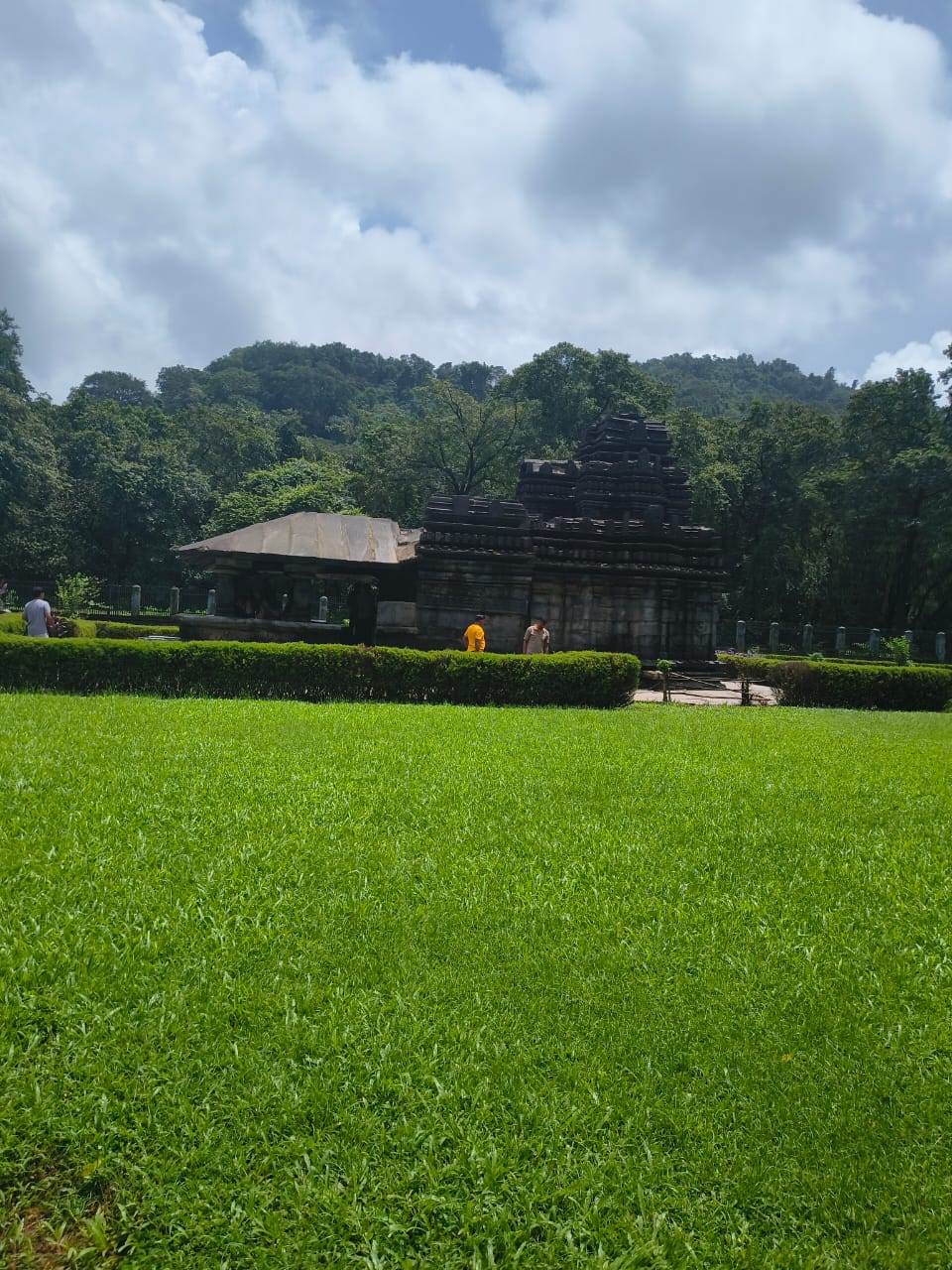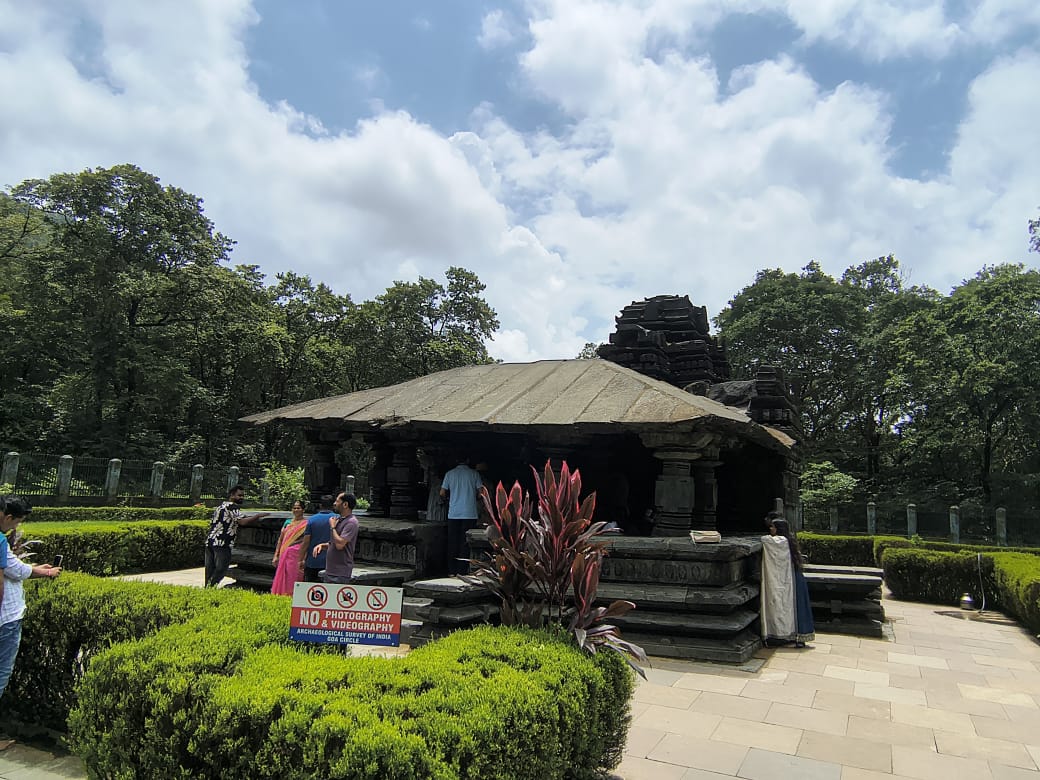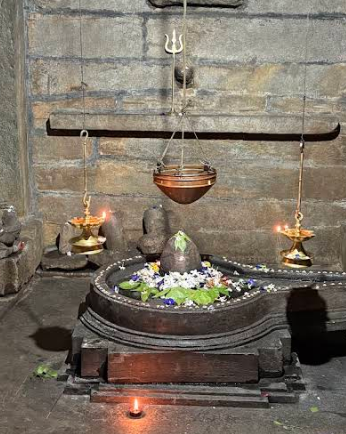Mahadev Temple, Tambdi Surla: A Timeless Sanctuary in Goa's Emerald Heart Surla
🖼️ Photo Gallery




🛕 Temple Info
Hidden deep within the emerald canopy of the Western Ghats, inside the Bhagwan Mahaveer Wildlife Sanctuary, rests a sanctuary that whispers of eternity. the Mahadev Temple at Tambdi Surla. Far removed from Goa’s famed coastline and bustling markets, this temple offers a journey inward, into stillness, devotion, and a sense of the divine untouched by time.
The approach itself feels like a pilgrimage. The winding forest road draws you deeper into nature’s silence, broken only by bird calls, rustling leaves, and the gurgling of hidden streams. Upon arrival, the first sight that greets you is the crystal-clear flow of the Vazra Sakalacho Tirth, a sacred stream that skirts the temple as if offering its eternal prayers.
The temple’s form is modest yet powerful—crafted entirely from dark basalt stone quarried from the distant Deccan Plateau. Set on a simple raised plinth, it faces east, welcoming the first rays of the rising sun. The layout is traditional: a sanctum (Garbhagriha), a connecting vestibule (Antarala), and an open-pillared hall (Mukhamandapa).
The artistry is breathtaking in its detail. Four carved pillars, lathe-turned with exquisite precision, hold up the mandapa. The serpent motifs (Nagabandhas) entwined around their capitals speak of cosmic energy, while the ceiling blooms with delicately carved lotuses. On one pillar, an elephant trampling a horse stands out—a powerful motif frozen in stone. The hall opens on three sides, inviting air and light, with stone benches where one may sit in quiet contemplation. Inside, a headless Nandi remains steadfast, silently guarding Lord Shiva’s abode in the sanctum.
Surrounding this jewel of basalt is a living temple in itself—the dense forest, the whispering stream, and the rolling hills. The Archaeological Survey of India (ASI) tends the lawns and pathways, ensuring the setting feels both protected and welcoming. Here, human devotion and nature’s grandeur merge seamlessly, creating a rare space where peace flows as naturally as the water in the stream.
💫 Importance
The Mahadev Temple is more than an architectural relic—it is a testament to survival, faith, and the eternal bond between spirituality and nature.
- Architectural Legacy: It is the only surviving temple in Goa built in the Kadamba-Yadava (Hemadpanthi) style using basalt stone. Its interlocking construction without mortar has stood firm for over 800 years, reflecting remarkable engineering.
- Historical Survivor: When waves of foreign invasions swept Goa and countless temples were destroyed, Tambdi Surla’s remote jungle location shielded it. It remains one of the few windows into Goa’s sacred pre-Portuguese past.
- Spiritual Refuge: Still an active temple, its atmosphere is charged with devotion. The combination of natural soundscapes and the sanctity of worship creates an energy that stills the restless mind and opens the heart.
- National & Ecological Treasure: Nestled within a wildlife sanctuary, it highlights India’s age-old reverence for nature. Declared a Monument of National Importance, it is preserved not just as a site of worship, but as heritage for generations to come.
📜 History
Built in the 12th century, during the reign of the Kadamba dynasty, the Mahadev Temple reflects the dynasty’s spiritual devotion and architectural finesse. Some accounts suggest its creation was commissioned by Queen Kamladevi, while others credit Hemadri, a minister known for pioneering Hemadpanthi architecture.
The stone, sourced from the distant Deccan plateau, was carved elsewhere and carefully transported across mountains before being assembled here with astonishing precision. Each block fits seamlessly without cement, a technique that speaks of deep skill and discipline.
Centuries of obscurity allowed the temple to remain hidden during turbulent times. Surrounded by forests and far from human settlements, it was spared destruction during the Portuguese era. Rediscovered and restored, it now stands not just as a monument but as a silent chronicle of Goa’s resilience and devotion. The ruins nearby suggest the temple may once have been part of a larger complex, adding to its aura of mystery.
🪔 Pooja Timings
The temple continues to host daily worship. General visiting hours for devotees and travelers are 8:30 AM to 5:30 PM. Because the temple is located within thick forest, it is advised to plan your visit during daylight and leave before sunset.
The most auspicious occasion here is Maha Shivaratri, when the temple comes alive with chanting, rituals, and a gathering of devotees from across Goa and neighboring regions. On this night, the atmosphere resonates with deep spiritual fervor, connecting the present with centuries of devotion.
🚌 Transport Options
Reaching Tambdi Surla is as much a journey as the destination itself. The temple is located about 65 km from Panaji, 55 km from Margao, and 40 km from Ponda. Here are the main routes:
- By Air: The nearest airport is Dabolim Airport (GOI), about 75–80 km away. Taxis and rental vehicles are available at the airport for the drive to Tambdi Surla.
- By Rail: The closest station is Kulem (Colem) Railway Station, about 15–20 km from the temple. Some trains also halt at Londa Junction in Karnataka, roughly 40 km away. From either station, taxis or hired vehicles are the best way to reach the temple.
- By Road:
- From Panaji: 65 km via Ponda and Mollem.
- From Margao: 55 km via Chandor, Sanguem, and Mollem.
- From Ponda: 40 km via Mollem.
- Public buses rarely go deep into the sanctuary, so private vehicles, taxis, or rented bikes are the most reliable.
🏙️ Nearby Cities
Ponda
Margao
Panaji
Londa
Dudasager
MytempleMypride Reflection
Our MyTempleMyPride Experience During our visit, the forest path, the gentle stream, and the quiet sanctum created a profound sense of peace. Sitting beside the temple, we felt Lord Mahadev’s presence deeply, and it reminded us why preserving such sacred spaces is truly our pride. Authored by MyTempleMyPride, with insights from local devotees and personal exploration